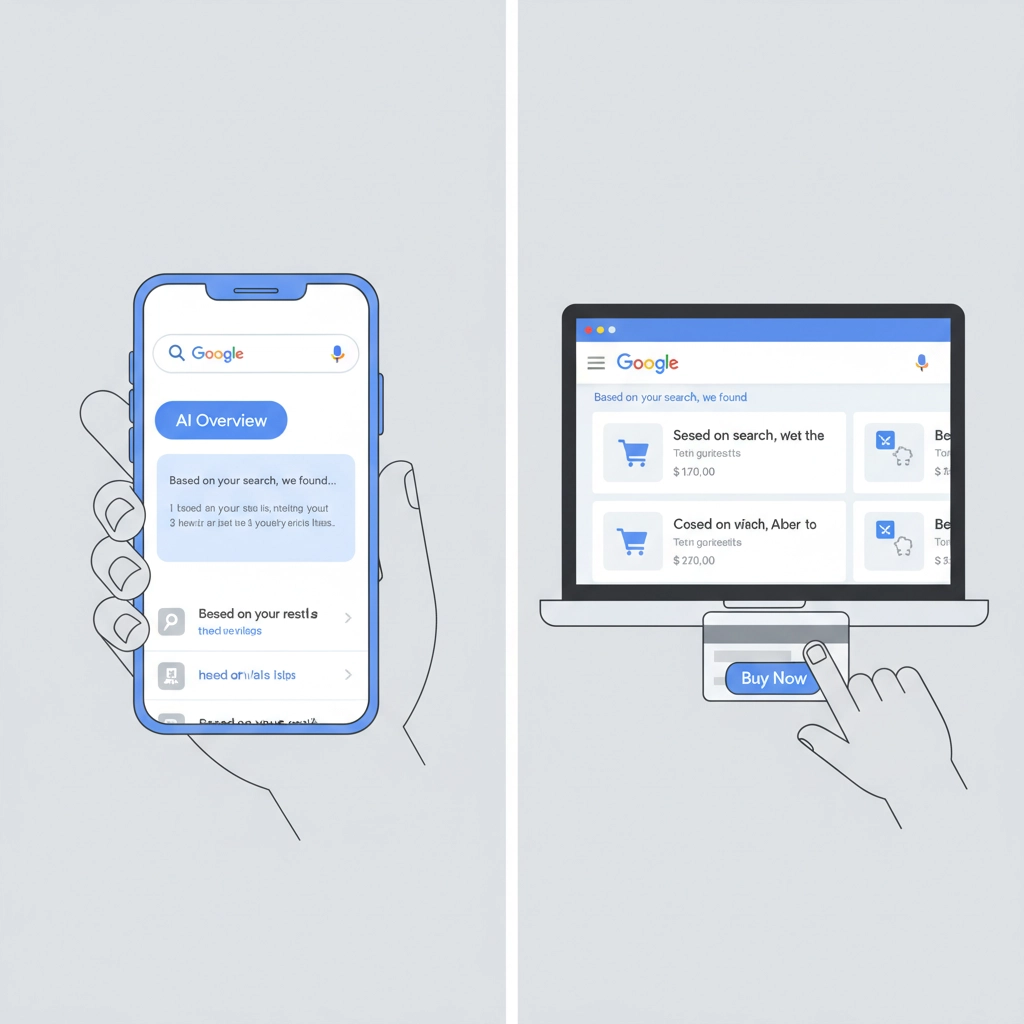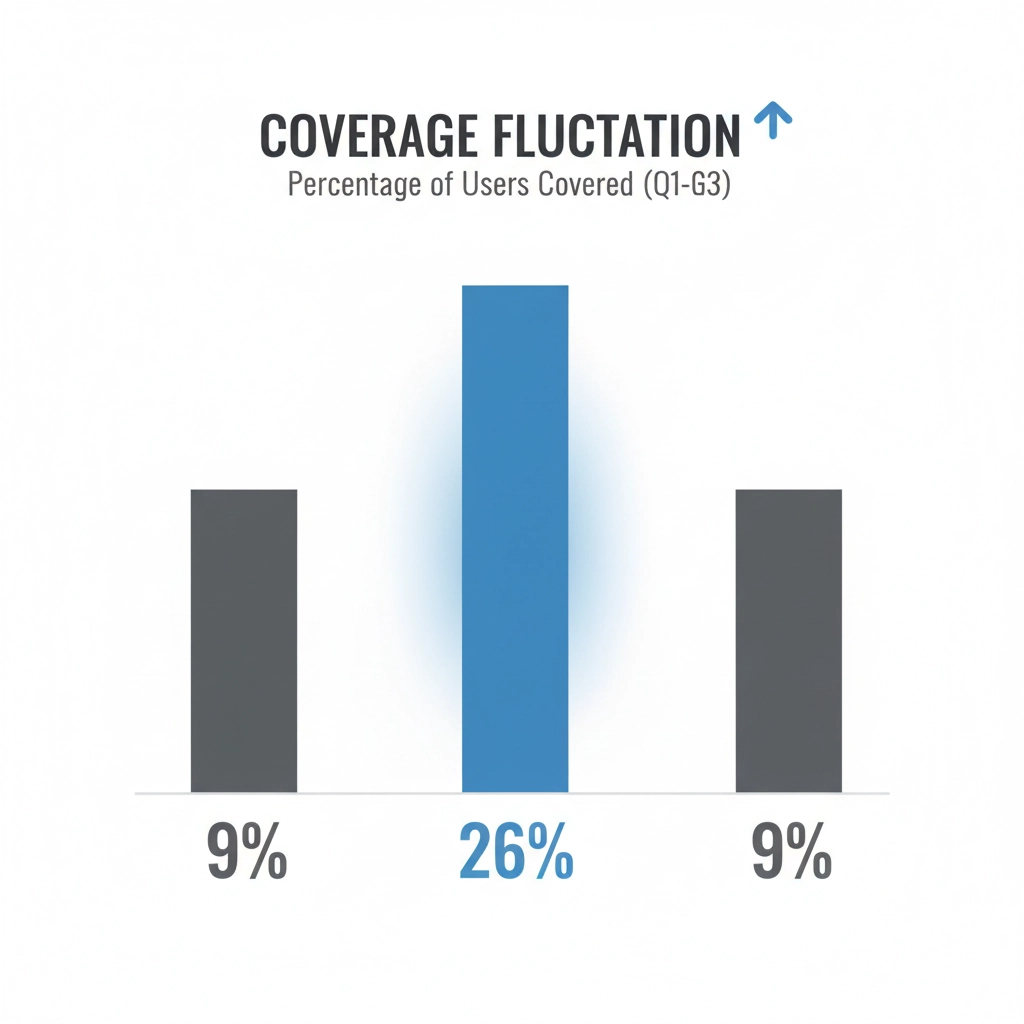Google’s AI Overviews dominate the research phase, but traditional search results still drive the actual sales. Recent data from BrightEdge reveals a clear division in how consumers navigate their buying journey: and understanding this split is no longer optional for businesses that want to stay competitive.
The Research vs. Sales Reality
AI Overvivers have become the go-to tool when shoppers are in discovery mode. Think about it: when someone searches “best wireless headphones under $200,” they’re not ready to buy: they’re comparing features, reading reviews, and gathering information. Google’s AI Overviews excel at this stage, pulling together comparisons and summaries from multiple sources in seconds.
But here’s where it gets interesting: once that same shopper decides they want the Sony WH-CH720N headphones and searches “Sony WH-CH720N buy online,” they skip right past any AI Overview and click on traditional search results. The research phase belongs to AI, but the transaction phase still belongs to classic search.
This isn’t just theory: it’s backed by hard data that reveals exactly how the customer journey has evolved.
The Numbers Don’t Lie: Coverage Patterns and Volatility
The AI Overview landscape has been anything but stable. Coverage spiked dramatically to 26% of keywords in September 2024, then retreated to just 9% in October. That’s not a minor adjustment: that’s Google fundamentally rethinking how and where AI Overviews appear.
Even more telling: following this pullback, only 30% of keywords maintained their AI Overview coverage. The year-over-year keyword churn hit 82%, meaning just 18% of keywords that showed AI Overviews in 2024 retained them the following year.
What does this volatility mean for your business? It means Google is still figuring out where AI Overviews add value versus where they create friction in the buying process. The patterns emerging show a clear preference for research and comparison queries over transactional ones.
Category-Specific Performance: Not All Industries Are Equal
The retention data reveals which categories Google considers most suitable for AI Overview treatment:
High Retention Categories:
- Grocery & Food: 56% retention
- TV & Home Theater: 43% retention
- Small Appliances: 37% retention
Low Retention Categories:
- Furniture: 3% retention
- Home Décor: 7% retention
- Apparel: 23% retention
Notice the pattern? Categories where comparison shopping and feature evaluation matter most (electronics, appliances, food) maintain strong AI Overview presence. Categories where visual appeal, personal taste, and immediate purchasing decisions dominate (furniture, décor, fashion) see minimal AI Overview coverage.
If you’re in a high-retention category, optimizing for AI Overview inclusion isn’t just recommended: it’s essential for staying visible during the research phase. If you’re in a low-retention category, your focus should remain on dominating traditional search results.
The Seasonal Strategy: November Research, December Sales
Here’s the insight that changes everything about holiday marketing strategy: November functions as the discovery window when AI Overviews surface educational and comparison content. This is when consumers research, evaluate, and create their shortlists. By December, those research queries disappear from AI Overviews, and transactional pages take over traditional search results as purchase decisions get made.
This seasonal pattern creates a specific window of opportunity. Ecommerce brands must establish AI Overview visibility in November to influence consumer research and consideration. Miss this window, and you’re invisible during the crucial evaluation phase: regardless of how well you rank in December’s transactional searches.
What This Means for Your SEO Strategy
The dual nature of modern search requires a dual approach. You need content that serves both the research phase (AI Overview optimization) and the conversion phase (traditional search optimization). Here’s how to execute this strategy:
For Research Phase Optimization:
Create comprehensive comparison content, detailed feature breakdowns, and educational resources that answer common customer questions. This content should be structured to appear in AI Overviews during high-research periods.
For Conversion Phase Optimization:
Maintain strong traditional search visibility for product-specific, brand-specific, and transactional queries. These pages need to load fast, convert efficiently, and capture users ready to take action.
The businesses winning in 2025 understand they need visibility in both phases of the customer journey.
Practical Implementation Steps
Content Strategy Alignment
Audit your current content to identify research-focused versus transaction-focused pages. Research content should target comparison keywords, feature questions, and educational searches. Transactional content should focus on product-specific terms, brand searches, and purchase-intent keywords.
Technical Optimization
Site speed and mobile-friendliness matter more than ever because they impact both AI Overview inclusion and traditional search rankings. Users researching on mobile expect instant answers, and users ready to buy expect seamless experiences.
Timing Your Content Calendar
Plan content releases around the seasonal research patterns. Launch comparison guides, buying guides, and educational content in September and October to capture November research traffic. Ensure transactional pages are optimized and promotional content is ready for December conversion traffic.
The Measurement Challenge
Traditional SEO metrics don’t fully capture this new reality. You need to track both research-phase engagement (time spent reading, pages per session, return visitors) and conversion-phase metrics (sales, leads, transactions). AI Overview appearances won’t directly correlate with immediate conversions, but they influence future purchase decisions.
Consider implementing attribution models that account for multi-touch customer journeys. The user who discovers your product through an AI Overview in November might not convert until December through a traditional search result.
Future-Proofing Your Approach
The AI Overview landscape will continue evolving, but the research-versus-sales division appears permanent. Google has found the sweet spot: AI for discovery and comparison, traditional results for transactions. This isn’t a temporary experiment: it’s the new search paradigm.
Businesses that adapt to serve both phases of the customer journey will capture more market share than those optimizing for only one phase. The companies struggling in 2025 and beyond will be those still treating search as a single-phase process.
Your customers are already using this two-phase approach whether you’re optimized for it or not. The question isn’t whether this trend will continue: it’s whether you’ll adapt your strategy to match how your customers actually search and buy.
Ready to Dominate Both Research and Sales?
Understanding the research-versus-sales divide is just the first step. Implementing a strategy that captures both phases requires expertise in content optimization, technical SEO, and performance tracking across multiple customer journey stages.
Expert SEO Consulting specializes in developing comprehensive strategies that dominate both AI Overviews and traditional search results. Our SEO audit services identify exactly where you’re missing opportunities in each phase of the customer journey.
Don’t let competitors capture your research traffic while you focus only on transactional keywords. Contact our expert team for a comprehensive analysis of your dual-phase search visibility, or explore our approach to modern search strategy through our latest insights.
The search landscape has changed permanently. Your strategy needs to change with it.












